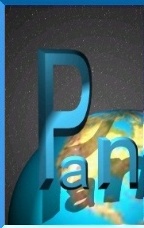
Preservation of History:
A Philosophical Perspective
by Marshall Faintich
Over the past year or so, there have been two related themes that have intertwined in hotly debated topics across the Internet.
The first deals with whether or not historical artifacts should be removed from their archaeological or historical location, and once removed, if they should be contained solely in museums, or distributed via sale/auction in to the hands of private collectors.
The second debate concerns to what extent were historical artifacts actually destroyed during World War II, or were instead, secretly removed and stored elsewhere for safekeeping, in locations now known only to a very limited number of people. And of course, this thread can be extended to artifacts destroyed or removed in other conflicts as well.
Mankind has been notorious for destroying the historical record, both as a by-product of war or change, and purposely to purge the truth. Perhaps this is part of the evolutionary process of mankind. Maybe it is a requirement for growth?
"Out with the old, and in with the new"
Consider, for example:
- Roman armies destroyed major ancient archives in the holy lands.
- The Christian soldiers of the Spanish Reconquista destroyed the Moorish libraries of Toledo, which housed more books than all of Christian Europe combined.
- In the later middle ages, shortages of metals forced the collection and melting of coins for issuance of new ones.
- Inflation in early 18th century France saw the collection of silver ecus to be restruck with new designs. I have an example where evidence of three different coins is clearly visible on the same piece of silver.
- Archaeologists have uncovered ancient buildings to find missing columns, etc, only to find them used in a nearby building of a later date.
And the list goes on....
But there is hope: first of all, electronic media allows for storage of massive amounts of textual and graphical information. As our society matures technologically, we will hopefully archive history on permanent and readable media for future generations. Although we may not always save the "original," we should be able to save the record.
Secondly, in support of those of us who are caretakers of numismatic materials for future generations, the dispersion of coins and other historical artifacts into the hands of many collectors lessens the chance that single acts of destruction will erase the entire lot. While I fully support the placement of very rare pieces in museums for all to see, many more artifacts can be carefully preserved by knowledgeable collectors around the world.
Just as the distributed design of the Internet was intended to keep communication lines open without a central switchboard that could be destroyed in a single act, we should encourage the storage of historical artifacts in multiple locations, and the electronic recording and archival of them. We should never forget that history is always changing, from buildings to books, to coins. And not just ancient ones, but also that 100 year old building downtown that is being torn down to make the way for a new skyscraper - two thousand years from now, that building will be ancient history as well, so maybe we should take a picture of it and get it scanned!
It is truly sad when a great masterpiece is destroyed - but we know that the process of change will always happen - hopefully, but not always, in a planned and careful order, so we must arm ourselves with the best tools possible to preserve as much as we can in one form or another. Future generations are lucky that we have now moved into the age of technology. Can you imagine having a CD-ROM filled with digital images of ancient Rome or 13th century Paris?
We are the caretakers. We must act accordingly.
About the author
He is the co-founder of TRIFID Corporation (St. Louis, MO), a company that produces geographic information products from aerial and satellite imagery. Previous work experience includes sixteen years as a government scientist, including an assignment at the Institut Geographique National in Paris, France.
His work history includes satellite system studies, astrodynamics, remote sensing, digital cartography, and digital information analysis. He is a member of several NASA working groups, and is a past National Director of the American Cartographic Association. He is the author of more than fifty technical papers and several articles on numismatics.
The author resides in St. Louis, Missouri.
See his web page, Symbolic Messengers of Medieval Man, for details of his new book on the use of astronomical symbols on medieval coins.